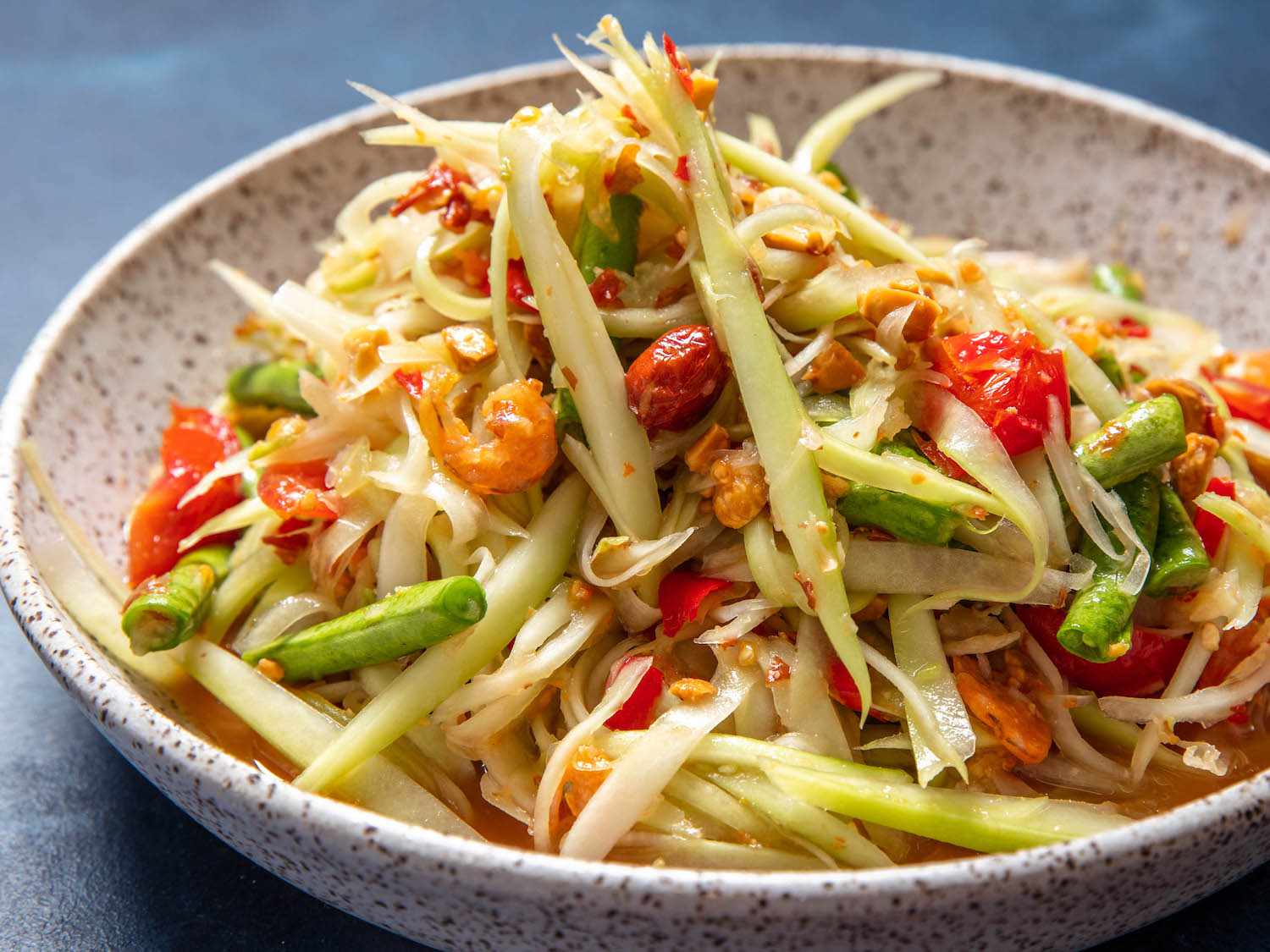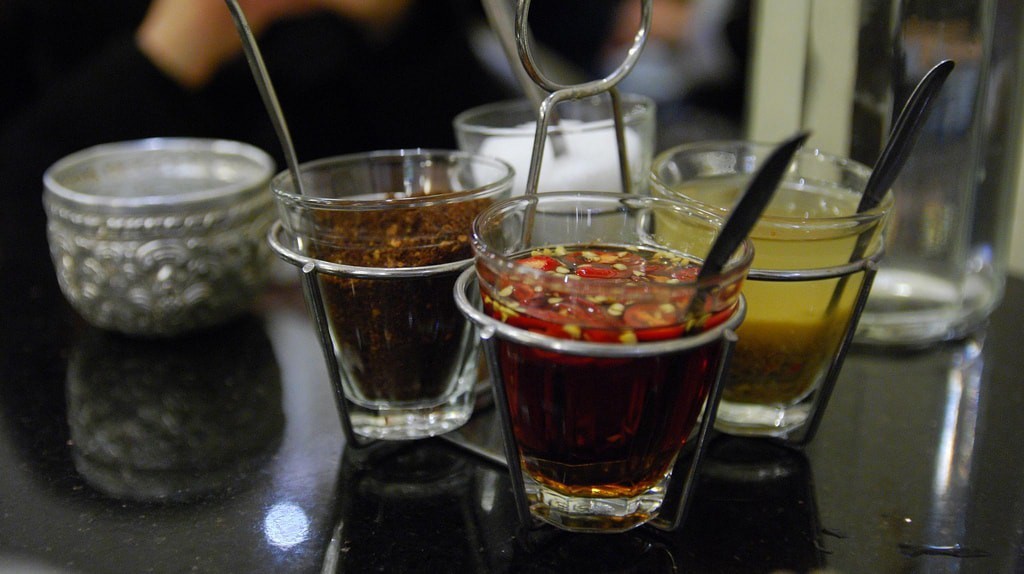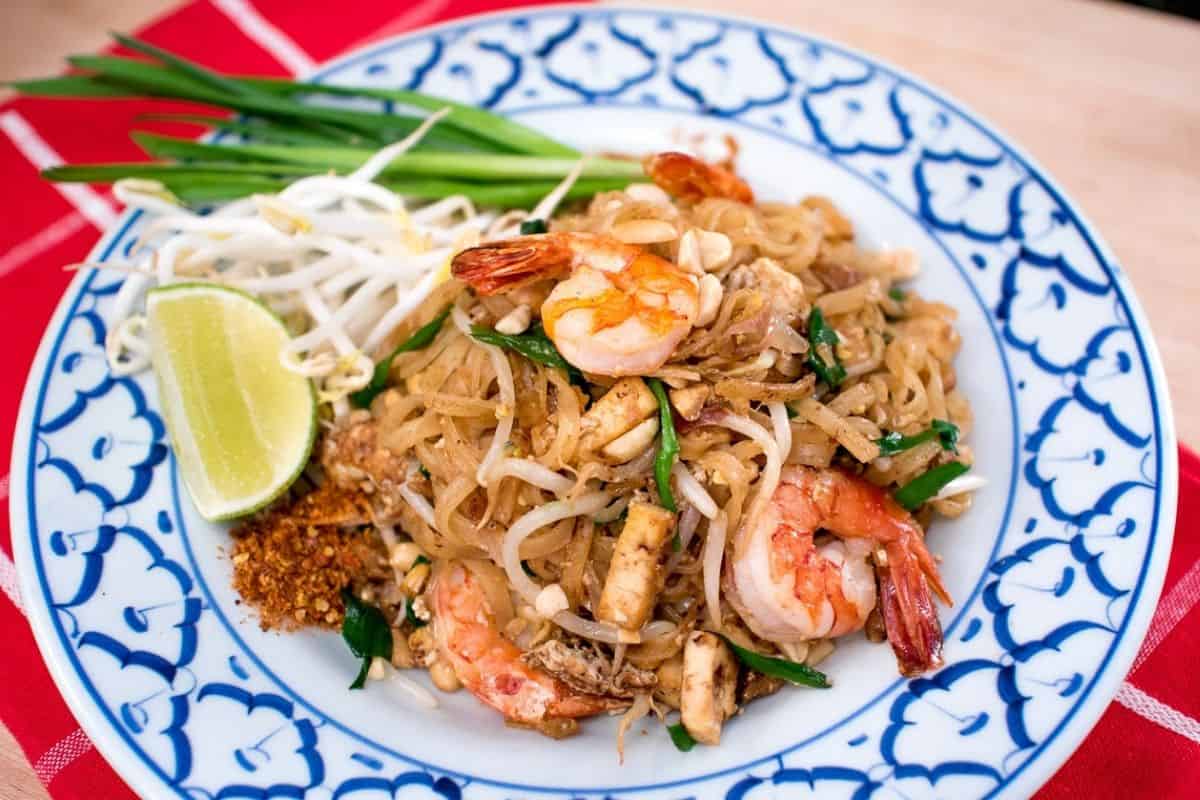Everything You Need to Know About Thai Food
We love Thai food! We especially love its bold flavors. This sentiment was also echoed by the late chef, author and intrepid traveler Anthony Bourdain. When tasting Thai cooking for the first time, he remarked: “It was like discovering a colour I never knew existed before. A whole new crayon box full of colours.”
We adapted and abridged two articles by TheWingedFork.com that answer what Thai food is all about. Our hope is that it awakens your senses to the colorful world of Thai flavors…
If you’ve ever been to Thailand, you know that the vibrancy and variety of the country’s cuisine is (sadly) under-represented by Thai restaurants in your home country. This is true both in terms of the number of dishes you can find on menus, but also in the intensity and complexity of the flavors.
Below, I’ll answer some common questions about Thai food, which I think you’ll find illuminating whether or not you’ve visited Thailand. If you have, they might help you explain the nuances of Thailand’s culinary culture to your less-traveled friends.

If you haven’t visited Thailand, I have a feeling you’re going to start searching for flights soon. Once you’ve read the juicy facts I’m about to give you, two weeks in Thailand will seem like an even more delicious prospect.
What is traditional Thai food?
“Traditional” Thai food takes many different forms, and varies regionally. Well-known Thai dishes include Pad Thai (stir-fried noodles with meat, seafood or tofu), Gaeng Kiaw Wan Gai (green curry soup with chicken) and Som Tam Thai (Thai-style spicy papaya salad). Although these dishes are most authentic and delicious in Thailand, you can find them at most Thai restaurants around the world.

What makes Thai food different?
For me, Thai food is special for precisely the reasons that Thai culture, more broadly, is so unique: It is unabashedly intense. Whether because of its eclectic flavors (which I’ll describe more in a minute), bright colors, or the sometimes unorthodox ways it’s prepared (in street stalls, for example, with seemingly minimal attention paid to sanitation), Thai food is loud, proud and unapologetic.
What makes Thai food different?
If you’ve ever been to a Thai restaurant (especially in Thailand), you’ll notice a four-lobed sauce receptacle, known as Puang Prik, on the table. This contains sugar (sweet), fish sauce (salty), vinegar (sour) and chili flakes (spicy)—the way Thais manually season their foods provides a hint to how they prepare it. While some dishes showcase one taste more than another, all maintain some balance of these four key flavors.

About Pad Thai, the national dish of Thailand
Pad Thai is the national dish of Thailand, and there are few dishes more popular or more ubiquitous than this one in the Land of Smiles. The name of the dish itself even indicates how closely it is associated with Thai identity. The word “pad” just means “fried” and can be used to refer to any kind of stir-fry dish, so this is a Thai stir-fry.

Surprisingly though, pad Thai it’s not a centuries-old tradition, but rather a relatively recent creation that was invented in the 1930s. Prime minister Plaek Phibunsongkhram spearheaded a major campaign to modernize the country while also promoting Thai nationalism and minimizing Chinese influence. Perhaps he felt the need to add the word “Thai” to the name since stir-fried noodles are essentially a Chinese dish in origin.
In any case, the campaign worked, and pad Thai became popular throughout the country. You’ll see it served at restaurants but also at street food carts everywhere you go. It’s quick and easy to prepare, which is probably why it’s been such a big hit with street food vendors.
Made from a base of rice noodles, these are sautéed together with eggs, tofu, garlic, chili pepper and shallots. Lime juice, crushed peanuts and mung bean sprouts are also commonly used as toppings to round out the flavor profile.
Do you like Thai food? What other dishes have you tried other than Pad Thai?

